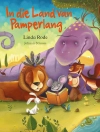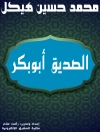In ‘The Wonderful Adventures of Nils, ‘ Selma Lagerlöf crafts a captivating narrative that combines the charm of a children’s adventure with the profound reflections of a moral fable. Set against the backdrop of Sweden’s picturesque landscapes, this book follows the journey of a young boy, Nils, who is transformed into a tiny creature and compelled to travel across the country on the back of a goose. Lagerlöf’s prose is rich and lyrical, echoing the folkloric traditions of Swedish storytelling, while weaving themes of transformation, respect for nature, and the importance of humility into this enchanting saga. The book is not only a delightful tale for children but also serves as a powerful commentary on the relationship between humanity and the natural world, exemplifying the complexities of individual growth against societal expectations. Selma Lagerlöf, the first female writer to receive the Nobel Prize in Literature, is renowned for her ability to blend realism with fantasy. Her upbringing in the rural Swedish countryside and her deep admiration for folklore and mythology significantly influenced her literary creation. Lagerlöf experienced the disconnect between industrialization and tradition firsthand, immersive such themes in her works, often advocating for the preservation of cultural narratives and the importance of moral responsibility. I highly recommend ‘The Wonderful Adventures of Nils’ not only for its engaging storytelling but for its rich insights into the Swedish spirit and the human condition. This timeless classic invites readers of all ages to explore the magic of adventure while reflecting on their place within the tapestry of the natural world.
关于作者
Selma Lagerlöf (1858–1940) stands as one of Sweden’s most esteemed writers, an innovator of literary style and the first female Nobel laureate in Literature (1909). Born into a wealthy family in Värmland, Sweden, Lagerlöf was deeply influenced by the folk tales and legends of her native province, which imbued her writing with a distinctive narrative charm and lyrical quality. Her education at the Royal Women’s Superior Training Academy in Stockholm honed her literary skills, leading to a career as a teacher before she dedicated herself fully to writing.
Lagerlöf’s breakthrough came with her first novel, ‘Gösta Berling’s Saga’ (1891), a romanticized account of her homeland’s past that revealed her storytelling prowess. However, it is ‘The Wonderful Adventures of Nils’ (orig. ‘Nils Holgerssons underbara resa genom Sverige’, 1906–1907), a bewitching blend of Swedish geography and folklore, which has secured an enduring place in children’s literature. Intended as an educational book for schools, it transcends its original purpose through the fantastic story of a boy transformed into an elf and his enlightening journey across Sweden on the back of a goose. Lagerlöf’s gradient from realism to fantasy, and her commitment to themes of redemption and humanity’s relationship with nature, are hallmarks of her literary style. Her prominent position in Swedish culture has been reaffirmed by her appearance on the country’s 20-krona banknote, solidifying her legacy as an icon of literature.












